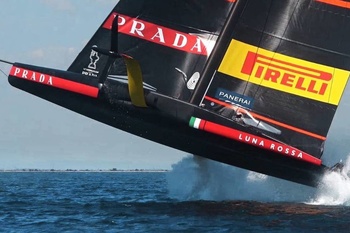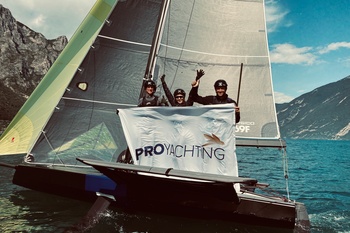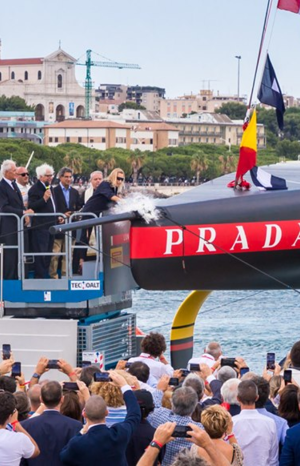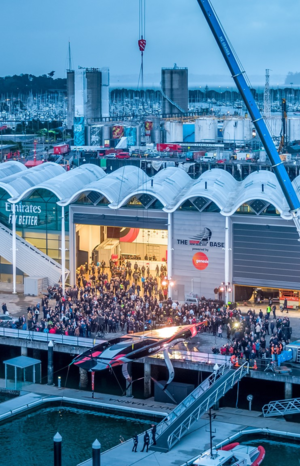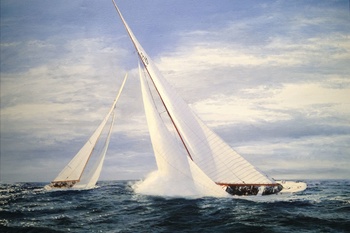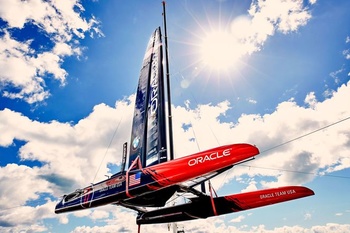A few years ago, Larry Allison decided to open the door with his foot to the new America's Cup and launch the mass spectator there, making sailing spectacular and understandable for everyone. Paired with Russell Coutts, he began to promote a new Cup format, sharpened for television broadcasting.
A good picture required costs not only from the software tycoon, Challengers also had to pay for photogenic AC72 for his vision of the race. Dissatisfied with some or other actions of Allison were almost all, and, in general, a sensible idea to make sailing races fun for TV lost - too many claims have accumulated. In 2013 it got worse: the tragedy on the Artemis boat sharply raised the question of AC72 safety, and in the summer there was a failure of all articles of the Louis Vuitton Cup. And it was not only a small number of participants, but also as a broadcast - there was no sound or pictures from the boats.
The TV preacher, Larry Allison, screwed up by backing off his own rules, for which he again screwed up the community.
The final series of match races changes everything: «America's Cup» against the backdrop of Alcatraz prison became a blockbuster. He, of course, got a big hit with the «plot» (which cost the «main character's cambec»), but in any case it was a» new level of «cinema. Here the whole arsenal is already involved, from live images from on-board cameras to impressive computer graphics superimposed on the reality in the live broadcast. Many claims to the organizers remained, but wow-effect has done its job.

Unexpectedly tough in support of the 34 America's Cup was Simon Payne, the champion in the «Moth»class, calling all his critics «shit compared to these guys». Apparently, compared to those who make and race this very Cup. He explains that he's happy to watch any race. He watches the Volvo on the 50th day, when the leader is in one ocean and the outsiders are in another, he watches transatlantic and Wandaia, C class races, dragons in Weymouth, championship «moths»... And he doesn't understand where all this criticism comes from, when there is an opportunity to watch really live races.
How revolutions are made.
In 2010, the Oracle team hires engineers Stan Honey and Ken Mills. They are tasked with applying the latest advances in telemetry, tracking and augmented reality to sailing races.

The final race of the old format in Valencia: Alinghi VS New Zealand at the 32nd «America's Cup.»
Elements of «virtual reality» first appeared at the «America»'s Cup in 1992 as animated movies. The broadcast switched from a live race to animation and back, but it was difficult for viewers to compare the two images. Explain what the commentators had to do.
Stan Honey's team (he took over as director of AC technology) superimposed virtual reality on the real-time races. The graphics and live broadcast combination system they developed specifically for the America's Cup was called AC Liveline and was rolled out at the AC World Series. In spring 2012, it won the Emmy Award for Innovation.

«Modernization, innovation, technology» have made the America's Cup friendly for everyone...
How does it all work? AC Liveline uses data from the helicopter and the AC 72 catamarans, which have an advanced GPS receiver on board that supports INS. In addition, engineers have used additional radio transmitters mounted on boats that transmit a 1023 bit/ms sync signal. The shore-based base station adjusts the coordinates of the catamarans to the atmospheric conditions.
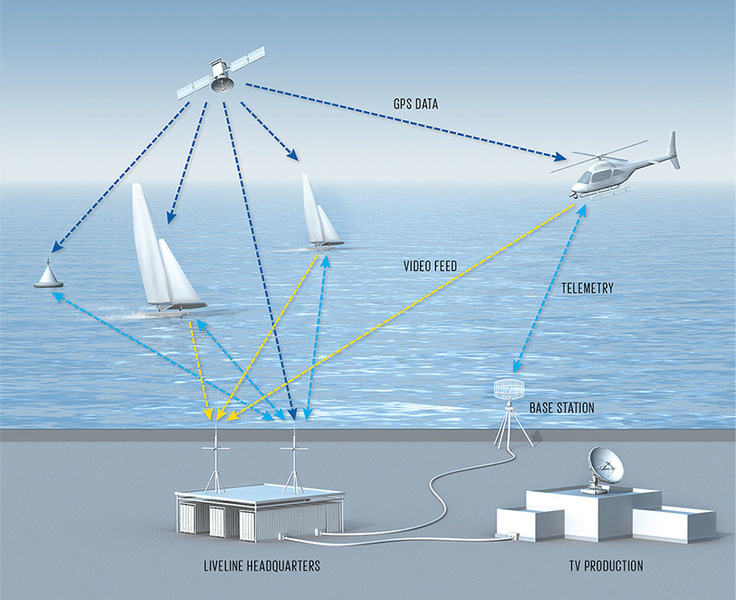
If the error is high, the graphics and video «will» run in different directions. The coordinates of the helicopters are also determined with an accuracy of 2 cm, and the angle of the camera shooting the race is 0.01 degrees. At headquarters, all data are synchronized and supplied with relevant graphics, and the viewer is given chronologically correct picture from different points of shooting.
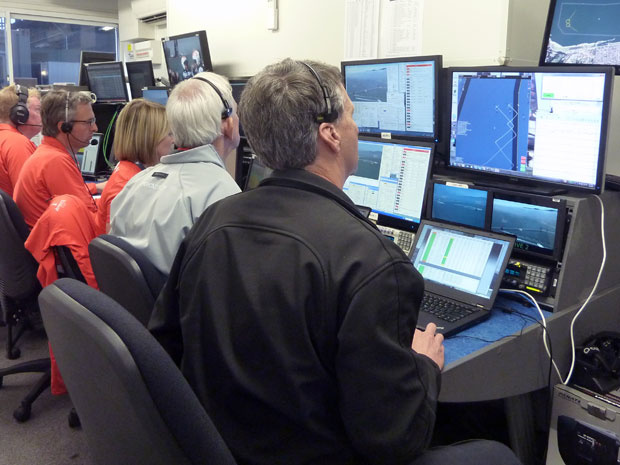
Welcome, everyone.
The original idea was to recruit people who had nothing to do with sailing into the production team so that they could make a sports show for everyone. That idea has changed. Everyone who was ultimately responsible for broadcasting had something to do with yachting, and they did a TV show for their own. Stan Honey himself is a seasoned racing driver, and he realizes that knowing where the gates are isn't enough to interpret the actions of the crew.
Laylines, wind and currents speed and direction, borders, penalties, markings showing who is ahead - all this together with a live picture made the race understandable, above all, to the professional audience.

Promo-roll of America's Cup mobile application
Ironically, journalists who visited the site noted that viewers on the shore also downloaded the AC application to smartphones to watch the online broadcast with graphics and understand what is happening. Initially, the "TV" format of the America's Cup made sailing races fascinating in reality.
That's the loud word revolution that Larry Ellison loves so much.


